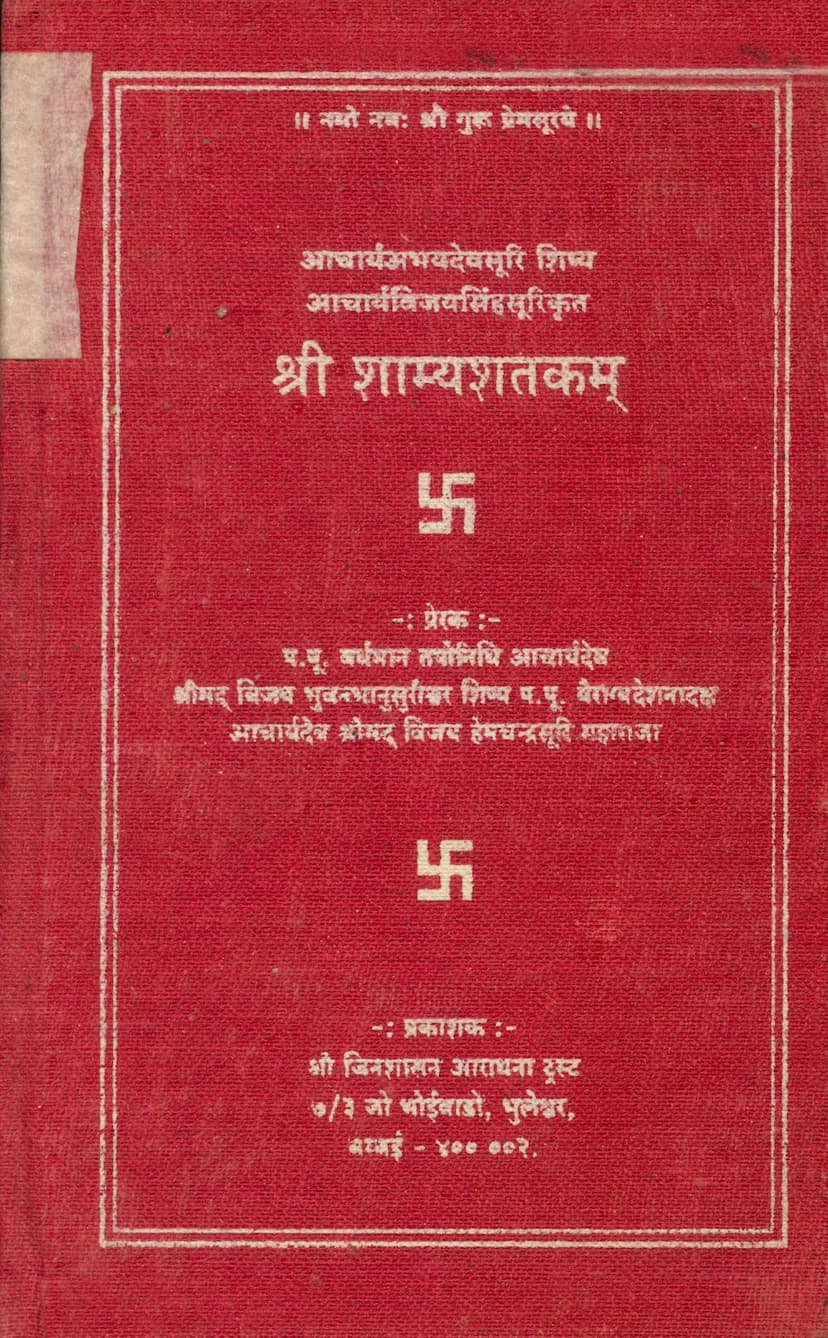Shamyashatakam
Added to library: September 2, 2025

Summary
The provided text is the Shamyashatakam, a Jain scripture authored by Acharya Vijaysinhsuriji, a disciple of Acharya Abhaydevsuriji. The text, published by Shri Jinshasan Aradhana Trust, is a collection of verses aimed at guiding the reader towards equanimity (Samata) and detachment, ultimately leading to spiritual liberation.
The book highlights Samata (equanimity) as the supreme solution to overcome suffering caused by insatiable desires and the cycle of karma. It emphasizes that true happiness lies not in worldly pleasures, which are transient and lead to further entanglement, but in inner peace and detachment.
Key themes and concepts elaborated in the Shamyashatakam include:
- The Nature of the Soul: The text describes the soul as pure, innate, and inherently blissful, veiled by ignorance and attachments.
- Equanimity (Samata): This is presented as the primary tool for spiritual progress. It involves maintaining a balanced state of mind, free from attachment and aversion towards worldly experiences.
- Detachment (Vairagya): The verses advocate for cultivating detachment from worldly objects, sensual pleasures, and even the body, recognizing their impermanent nature.
- Control of Senses and Desires: The text details the detrimental effects of uncontrolled senses and desires (kama, krodha, lobha, moha, etc.) and the importance of restraining them through practices like Brahmacharya (celibacy) and mindfulness.
- The Power of Knowledge and Wisdom (Viveka): Discerning between the real and unreal, the eternal and transient, is crucial. This wisdom helps in shedding attachments and understanding the true nature of the self.
- Inner Peace and Tranquility: The verses guide the reader towards achieving an inner state of peace through meditation and contemplation, leading to a state of "Laya" (absorption).
- Renunciation of "Mamata" (Mine-ness): The concept of "Nirmamta" (non-possessiveness) is repeatedly stressed as a path to spiritual freedom.
- The Role of Virtues: Virtues like forgiveness (Kshama), contentment (Santosh), non-violence (Ahimsa), and friendliness (Maitri) are highlighted as essential for spiritual growth.
- The Illusion of Worldly Happiness: The text critiques the pursuit of material pleasures, equating them to mirages or artificial happiness that ultimately lead to suffering.
- The Path to Liberation (Moksha): The ultimate goal is to attain liberation from the cycle of birth and death, which is achievable through the cultivation of equanimity, detachment, and self-realization.
The Shamyashatakam offers profound insights into the Jain philosophy of right conduct, knowledge, and faith, guiding the seeker towards a life of spiritual discipline and ultimate emancipation. The verses are described as inspiring, promoting detachment, and leading to the realization of eternal happiness.